Don’t get me wrong, Pentax has made some incredible cameras in the past, many of which are still brilliant to this day. One of my favorite SLRs to this day is the KM released in 1975. But technology is advancing, and this “new” camera feels a little out of place, even though it produces great files.
Something Old, Something New, Nothing Blue
The actual body of the Pentax K-3 Mark III Monochrome was released two years prior, back in 2021, as just a regular Pentax K-3 Mark III. It featured a rugged exterior, as we’re used to from Pentax, a fixed LCD screen, dual SD card capability, and a 25-megapixel APS-C sensor. The camera was okay. The image quality was decent, but one thing stood out to me the most: Pentax ergonomics with either the K-3 or the K-1 cameras are just brilliant. They just feel superior to any other DSLR out there. But that is a strong personal preference many will surely disagree with.
Some of the features making a return are the autofocusing system and the viewfinder. The latter is brilliant for an APS-C DSLR. It is large, bright, and clear as long as you’re using bright lenses. Many photographers out there still swear by the optical viewfinders and just cannot imagine using an electronic one, so it does make sense to still give people the option. However, the autofocus making a comeback is a bit of a disappointment.

Pentax cameras have their deserved fanbase. The K-1 Mark II is a great and unique piece of kit, just like the K-3 Mark III. But they are both held back by lackluster autofocus. Nowadays, it is surpassed by even the basic mirrorless cameras, like Canon’s R50, for a fraction of the price, or Fujifilm’s X-T30 II. It is clear Pentax DSLRs aren’t made for fast-paced environments. I often missed simple shots of people walking toward me at a leisurely pace. The fact that most Pentax lenses still focus using a screw drive does not help the case at all. And don’t get me started on the sound these lenses make when focusing.
The one and only new thing in this two-year-old body is the sensor. As the name suggests it is a monochromatic one meaning it can only capture luminance information from the photographed scene. We’ve seen monochrome cameras in the past, and many are familiar with the concept, but not all, so let me sum up the main inner workings and benefits of ditching the color matrix.
Monochrome, Not Monochrom
Leica is by far the most well known when it comes to releasing monochromatic cameras from the original Leica M Monochrom, to the latest M11 Monochrom. It is only a matter of time before we see the newly released Q3 with the same treatment. This camera is Pentax’s first attempt at this niche, and I was a bit surprised it even happened. Had it been a GR III Monochrome, I could have definitely seen the appeal. But I digress. What is a monochrome sensor?

Digital sensors are only capable of detecting luminance information. That’s it. The fact they shoot color is thanks to a matrix of red, green, and blue filters on top of the sensor that block out certain wavelengths. The processor’s job is then to “demosaic” said data and translate it into something our eyes can comprehend. This process does cost the sensor a bit of dynamic range as well as blocks out a bit of light hitting the sensor.
So, what are the benefits of a monochrome sensor? You get multiple. First and foremost, you get better low-light performance. Your camera is able to see more light due to the Bayer matrix not blocking it out, which lets you shoot at higher ISO values with less grain/noise. The next benefit is an increase in captured detail. The pixels are not divided into different-colored sub-pixels so the amount of detail is higher at the same resolution. And third should be the increased dynamic range. It’s not by a huge margin, but the difference is there.
Shooting on a monochrome sensor is different from just converting to black and white in post thanks to all of this. However, you need to take into account the fact that you simply cannot play with the color values afterward in post. If you want the skin tones to pop and the foliage to go darker, you simply need to add a red or yellow filter to your lens prior to taking the shot. And unless you’re willing to spend a lot of time getting questionable results, you can’t ever introduce color into the photo after it’s been taken.

So, Why Would You Want This?
For those of us who shoot most of our work in black and white, I can see a clear appeal. The files will look cleaner and have more detail. The benefits are there. However, there are cameras out there that offer more for less. I like having the option of adjusting individual color levels in post even though the image is black and white. I very much prefer the ability to have color data in the raw image just in case and last but not least the autofocus of the K-3 Mark III was just disappointing. It felt similar to a Canon 250D or a Nikon D3200 which is by no means a compliment.
The lenses I’ve been loaned to try with the camera were the limited edition 35mm f/2.8 macro and the 70mm f/2.4. Both of which focus using the screw drive. The sounds emitted whilst focusing are stuck in the nineties as well as the speed and accuracy. Combine that with the fact that I could not get a sharp image out of these whenever I used any aperture value above or below f/8.

What I Liked
I enjoyed using the camera due to its ergonomics and bright viewfinder. The files imported on my computer were pretty damn good, clean, and full of detail if shot with a decent lens stopped down. The fact it’s still a DSLR made the battery life really nice but that is pretty much where the positives end on my end.
What I Disliked
Not just disliked but felt downright annoyed by when I was out with the camera. The autofocus has missed on many occasions. The speed of the camera as well as just using the whole thing felt like I was transported back at least a decade but without all the nostalgia of seeing the first Avengers movie for the first time in cinema or the fact that life just felt simpler back then. If you haven't guessed, I've had a fair share of issues with the camera. I was looking forward to returning it and picking up a Q3 for review or going back to my Fujis. But once I loaded the files into my Lightroom library I finally saw the potential had I had grown accustomed to the camera. It’d be pretty sweet to be able to use a manual focus screen with some legacy glass behind this sensor.

If You Can’t Afford a Leica
That is the strongest reason I can think of for getting this camera. You get all the benefits of a monochrome sensor without the added cost of a “red dot”. I’m just patiently hoping this was just a test run of the sensor and Ricoh will eventually stick it inside their next GR release. Now that would make much more sense and would even make me consider getting one.
Samples
Purchase
You can purchase the Pentax K-3 Mark III Monochrome here.

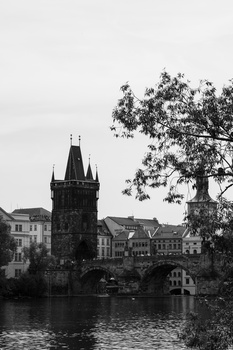
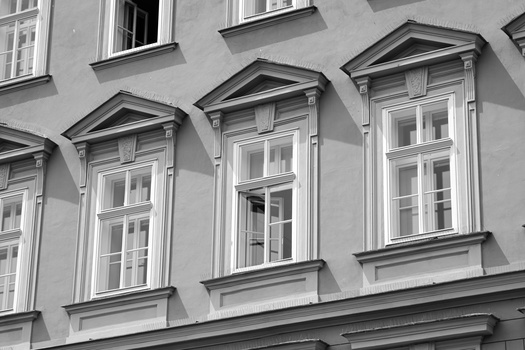
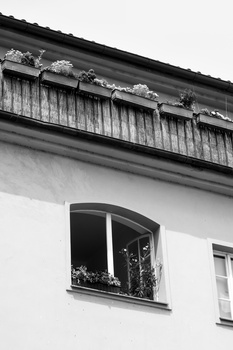
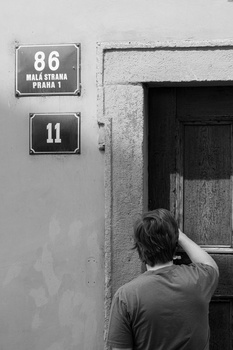
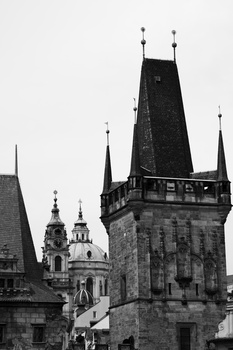

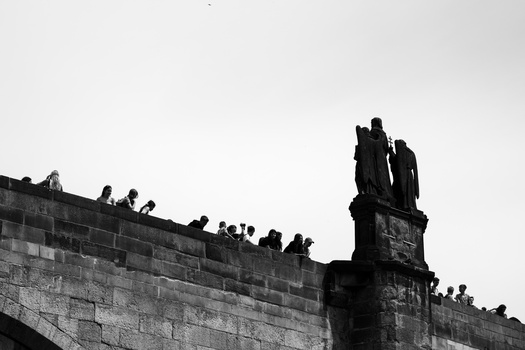

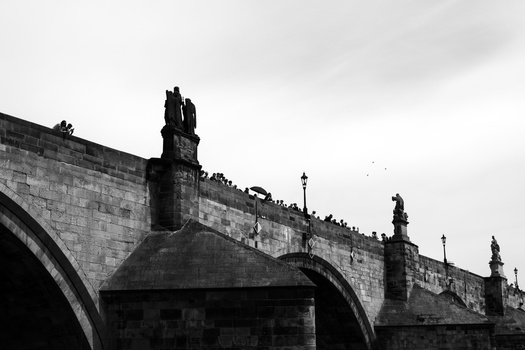
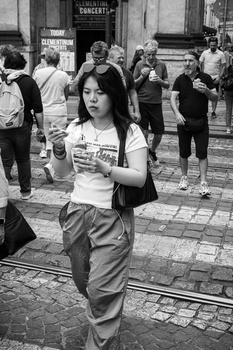

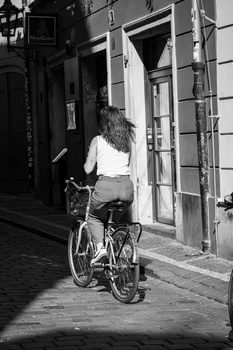
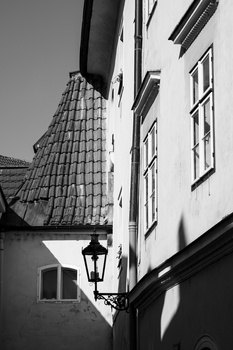
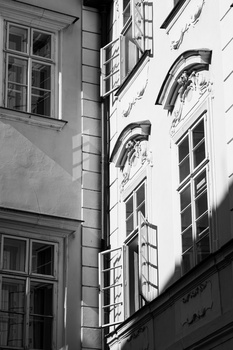
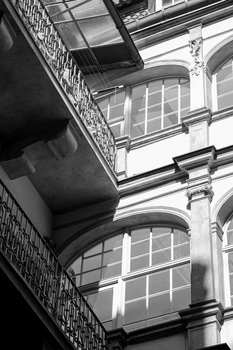

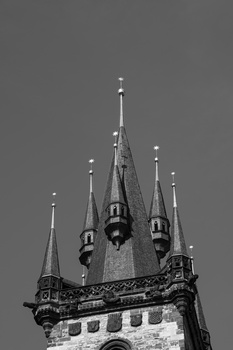
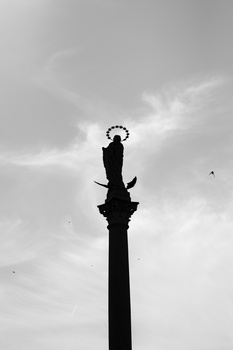

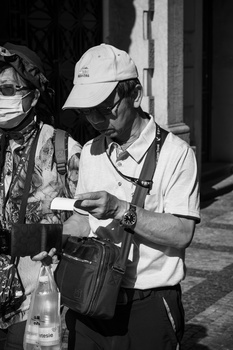
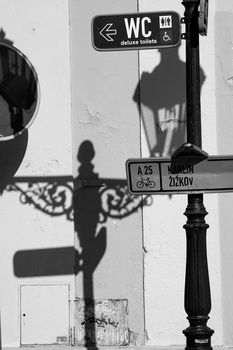
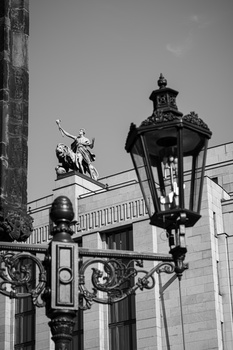
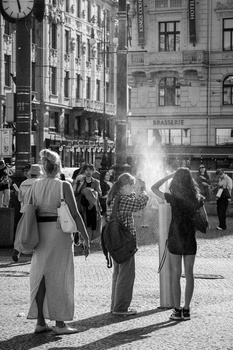
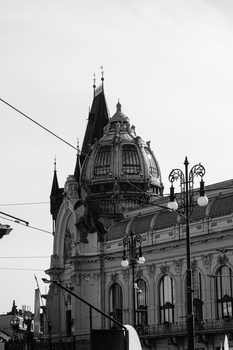






Well, I have been a mirrorless user for a decade now so an optical viewfinder is something I'm having a hard time adjusting to. But I do admit the controls and the ergonomics of the K-3 III are very good and the sensor does produce very nice files if the glass allows it. But the glass I had with the body left me a bit disappointed as well as the AF system...
I've got nothing against Pentax whatsoever. My first and favourite SLR was a Pentax KM. But compared to the K3 III standard and/or monochrome there are just far more advanced cameras for the same price out there nowadays.
An odd take for an odd camera. The k3-iii is generally considered to be one of the best of the antiquated DSLR tech cameras out there, and finally overcoming the near-universal complaints of autofocus on earlier platforms. I recently upgraded to the k3-iii and it's a great kit. comparing it to a D3200 comes off as someone trying to make their name by being intentionally provocative instead of objective.
The point has been missed. As much as cars have various purposes (off-road, sports, station wagon), so is with cameras. I can feel an obvious mismatch between the user and the tool.
Yeah. It's clear the camera isn't for me. But I do understand its appeal for others. I guess if I was an astro photographer I'd be beyond excited.
Neither have I on a scale larger than a beginner enthusiast. Monochrome sensors offer more detail with less noise at higher ISO values. So a monochrome sensor combined with narrowband filters lets you capture each colour separately merging them in post leaving you with a far more detailed image. This is a very simplistic explanation to a very complex way of shooting the night sky but I hope is was, at least in a nutshell, understandable.
So it's the usual snobbery of if Leica does it it's groundbreaking, anyone else especially from a reading star it's, "What's the point"?
Making it available for the GRIII as a special edition before we move into the GRIV which must surely be making an appearance in 2024/5.
However the advantage of the K-mount and all the possibilities for fantastic Fuji lenses as well decades of vintage lenses combined with a black and white sensor seems to be lost on the writer.
Also if you cannot get a sharp image out of the 35mm macro and 70 f2.4, I think there's a lot the user not having enough time to get the best out of the camera at play here.
I moved from Pentax to Fuji, primarily because my needs had changed. The autofocus of the Pentax was clearly more geared towards landscape than the needs I then had as a new dad.
Good to see them try something different to survive in a small niche, and they should be applauded for it. Full spectrum version next?
There's no need for the aggressive tone. No Leica "snobbery" was intended. I'm the last person to fangirl over anything Leica-made. I've used every brand of camera over the last decade. Some more some less but it's my job and I don't put any brand down below any other. Each has its distinction. My cameras of choice have been Fujifilm for a long time for my own personal work, but professionally I don't care what I'm using or reviewing.
I've spent a considerable amount of time on trying to get a sharp image out of the lenses including using a AF micro adjustment chart and tweaking the front/back focus. I do it on a regular basis at work so I know how it's done. No need to assume any lack of time spent nor any lack of the amount of testing. If I aim a focus point at a still subject and it's in focus but soft and with significant ghosting and other abberations whenever shot above or below f/8 it's not my fault. And it's not the camera's fault neither. The only lens without these issues was the DA 18-135.
I could see the appeal for legacy MF glass. I'd even enjoy using it. If it had the MF split-screen microprism to be able to use it effectively. The current setup is not really enjoyable to use in manual focus mode.
No aggression given or intended.
The fact is the Leicas and this camera have nothing in common, other than having back and white sensors. From start to finish of the piece it was made clear over and over "...but it's not a Leica", the strongest argument for buying one apparently is if you are too poor (rational?) to buy a monochrom.
Of course the Leica deserves a mention. A sentence or two should suffice. Review this from the perspective of what it is, a black and white DSLR with access to a vast array of lenses, both sharp and not, new and vintage - placing it in a unique position of offering something that no-one else does, almost unlimited creativity in the field of B&W photography. This opens the doors to vast exploration of the genre. The Leica should rather be the footnote as also an option for primarily street that doesn't offer that, even if it got there first.
As for MF focussing, it's really not that difficult, and I don't come from the film days. There's a focus confirmation indicator for starters, then there's focus peaking, live view on the screen and zooming in. Focus trap activates the shutter as soon as the subject comes into focus - hit and miss depending on what you are shooting, but can work well for example in a street setting. And if you're primarily going to use vintage MF lenses, focus effective focus screens are easy to find.
I wouldn't go to Pentax for best in class AF, the reason I left the brand, but a B&W camera is never going to be the only tool in the shed, so get that AF kick elsewhere.
And as for sharpness of those lenses mentioned, all I can say is 10 years ago I was getting more than sharp enough images from them. The 35 2.8 is particularly sharp even if not the ideal focal length for macro. Sadly today there is an obsession with lenses that are clinically sharp with little character. A flattering 70mm with just the right degree of sharpness is a good thing. It's a portrait lens.
It's nice to see any manufacturer doing something different. And this stands out as being peerless, if B&W is your bag. Especially if B&W landscape is your bag.
I feel like if this camera was around $1500-$1600 instead of $2200 it would do a lot better. You can buy a Fuji camera for about $500-$800 less and get some pretty top notch monochrome results as well as a multitude of other features. I mean shit the full frame K1 MK ii is cheaper by $400.
Now if money was no object I would totally buy this camera as well as a Pentax k1 MK ii and 645D lol
Simple economics, though. Small volume niche products will always cost more. They simple don't have the scale to market. The cost difference for the non-mass produced sensor could account for all of the price difference.
Interesting you mentioned Fuji. The full spectrum X-t1 IR cost around €1800 in 2015 at a time the regular X-t1 was on sale for €1200.
Different costs more.
I always hear a lot of complaints about auto focus......Blah Blah Blah.......just use manual focus it works well in the majority of cases ,does everything in life have to be automatic?In my view the image quality is more important..... but wait all the new lenses are near perfect....what ? more perfection.I like imperfect lenses and manual focus.Just my cup of tea
I think this camera is a great addition and you can use all your old imperfect vintage Takumar lenses which are manual focus and way cheaper to purchase.
Manual focus works great if you have some way of confirming focus like peaking and if you aren't shooting stuff like sports, wild life, and race cars. I use manual focus on my Fuji XT-2 with peaking to shoot BTS stills on film sets, funnily enough, with an adapted takumar lens. I get better results than with the auto focus on my Nikon DSLR cameras. They constantly hunt in low light. If there's a moderate amount of light then my Nikon cameras have no problem focusing. Manual focusing on a DSLR in low light is near impossible though. No focus confirmations and the view finder gets as dark as the scene.
I do not use a DSLR ,and yes I use focus peaking,I did use a DSLR before and found that the instant results on back of camera just meant a few extra shots.As for fast moving action I agree to a point, some blurred action shots are actually creative to view.I currently use the Z9 adapted to Takumar lenses, and it is fun.I rarely use auto focus unless I want tack sharp perfect action pics.But I really like the monochrome camera and am considering a purchase
I could definitely see the potential of the K-3 III Monochrome when used with legacy K-mount glass. My old 50mm f/1.4 would be wonderful on this camera, but it is a shame we don't at least get the option to install a split-image micro prism to be able to focus manually with ease.
It really is a pity that you formulated an erroneous K-3III auto-focus opinion based on two screw-drive lenses. Lenses that are great walk-around around travel glass. Those two lenses have their place but fast action isn't it. Expecting a macro lens to be fast focusing seems a little disconnected. Shooting K-3III's for fast paced work, I use the latest Pentax "star" series professional glass, it's blazing fast. Having shot a Fujifilm XT-4 with 56mm f/1.2 (@ f/1.4) alongside a Pentax K-3III with HD DFA* 50 f/1.4 SDM at a concert (from the pit), I found the Fuji struggling to keep up, and with a much lower keeper rate. The slight delay through EVF and jittery view was sub-par. If you were to give the K-3III Monochrome a fair assessment of AF performance then the HD DA* 11-18mm, HD DA* 16-50 SDM, HD DFA* 50 SDM, HD DFA* 85 or HD DFA* 70-200 lenses would transport you to a different reality. Only comparing apples-to-apples provides unbiased insight. That said I love the bokeh from the Fujifilm 56 f/1.2 but the Pentax HD DA* 50 SDM is noticeably sharper.
These pictures are ugly. Is it just you or the camera ?
Definitely me. I'm a lost cause.
This explains your review . Good job !
❤️
Just a tiny bit of brightened shadows or lowered highlights or a small curve adjustment. Not much else has been done. I usually prefer being able to brighten the reds and oranges and darken the greens and blues in my bw edits. The only way to do that here is to put a red filter on the lens. So yeah, I still prefer editing black and white from colour raws. But that is just a personal preference.
Your photos are wonderful! 🤔
Anyone who uses Pentax simply has never used anything else. I bought a Pentax digital camera because I had owned a Pentax film camera and just assumed Pentax was a good choice because it worked fine back in the day. I thought it worked as well as I could expect and assumed all other digital cameras were slow, had inaccurate auto focus and nonsensical menus. Then I used another brand of camera for about 2 minutes and experienced how cameras were actually supposed to work. I immediately got rid of my Pentax gear.
I have been working as a photojournalist since 1991, and I have always used Pentax. My current line up consists of the K-1, KP, and most recently, a K-3iii. Long story short, the K-3iii is now my go-to sports camera, by virtue of its advanced auto focus performance and high ISO quality. Not sure why you are having a difficult time with autofocus on the Monochome, and while I concede that some AF systems might be a bit better, I have shot everything from Hockey to soccer and lacrosse and more with my K-3iii and I'm consistently getting excellent result. My suggestion to you might be to talk with some Pentax users if you are having a rough time, maybe they can help. I can assure those of us who shoot with Pentax regularly have found ways to get the best out of it, so you don't have to be an island to yourself.
You are not the first long-term photojournalist I know to be using Pentax for either their entire professional career or at least the majority of it and I can definitely see why. Pentax cameras do definitely have their merits for this kind of work. I can see the ruggedness as one of the main benefits.
I was given two lenses to use with the camera and one of them was the slower screw-drive 70mm. I guess had I been using some of the more professional-oriented full frame glass I'd have better results but still, compared to the current competition of the same price range I can get better results with most cameras costing the same or even less.
Your choice of your preferred camera is the right one. Same as my choice of my preferred brand. No camera is perfect and we work with what fits our use and needs best. Clearly, Pentax stopped being the right choice for me since I went digital but that doesn't make them bad cameras. Just not for everybody. And that's fine. I'm glad there are Pentax users out there. It'd be a damn shame if the company went under. They're unique. But their recent releases (Like the amusing Kf) are leaving me a bit worried about their future. I'm hoping the K-1 Mark III is going to be The DSLR to grab in the sea of mirrorless for a pro who needs a mirror in his camera since everyone else is abandoning the technology.
As someone who primarily shoots B&W film, I know digital monochrome is a different look, but something like this begins to looks more appealing as film prices go up and up. Unfortunately, the problems you experienced make this camera hard to love. If the viewfinder could be made "good enough" to manually focus the camera, that might solve some of the issue, assuming it could meter w/ a third party lens in stopped down metering mode.
For me, that would make the Pentax more desirable than even the Leica Monochrome by virtue of the SLR's through the lens focusing. There's that price point advantage too. A Leica R lens to Pentax camera adapter is readily available, and something stellar like a Leica R 90 2.8 Elmarit can be found for under $500. That would make for a fair comparison w/ the Leica Monochrome. I'd love to see a heads up comparison.